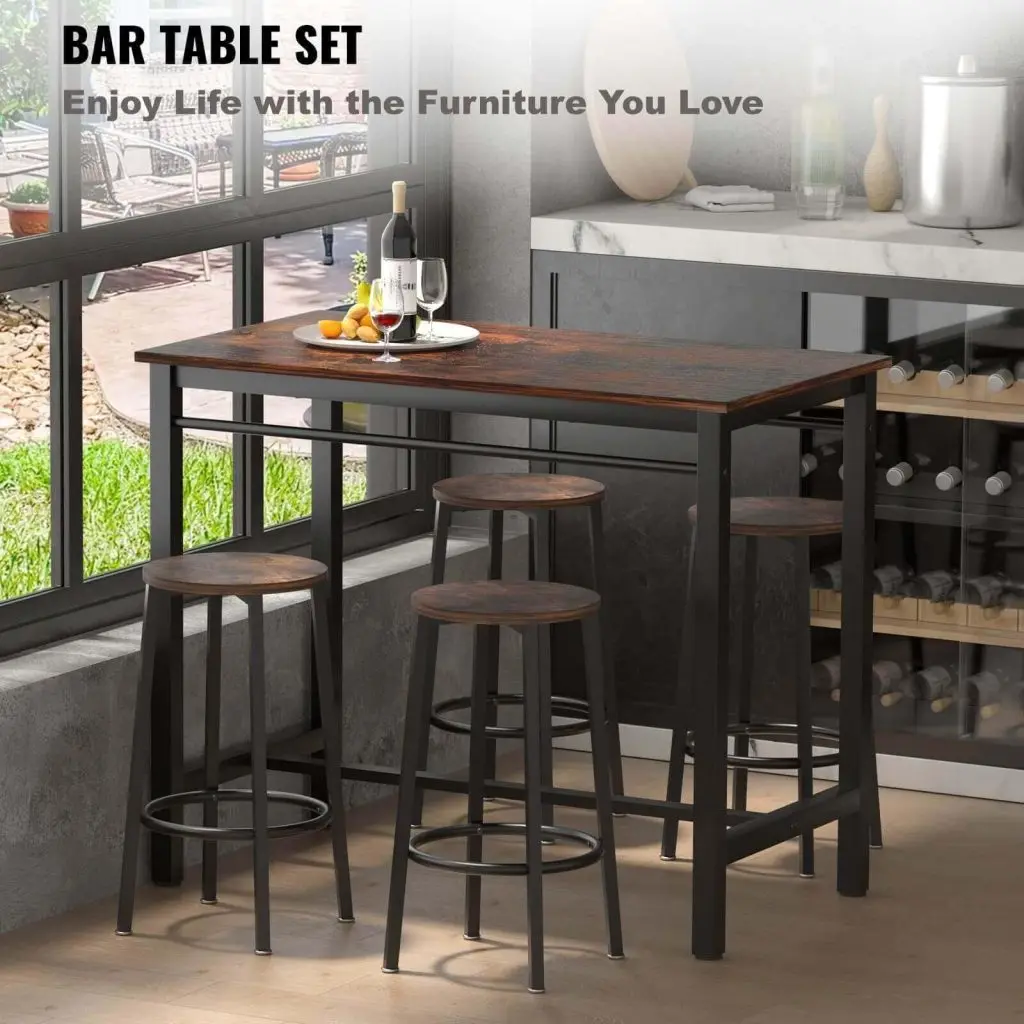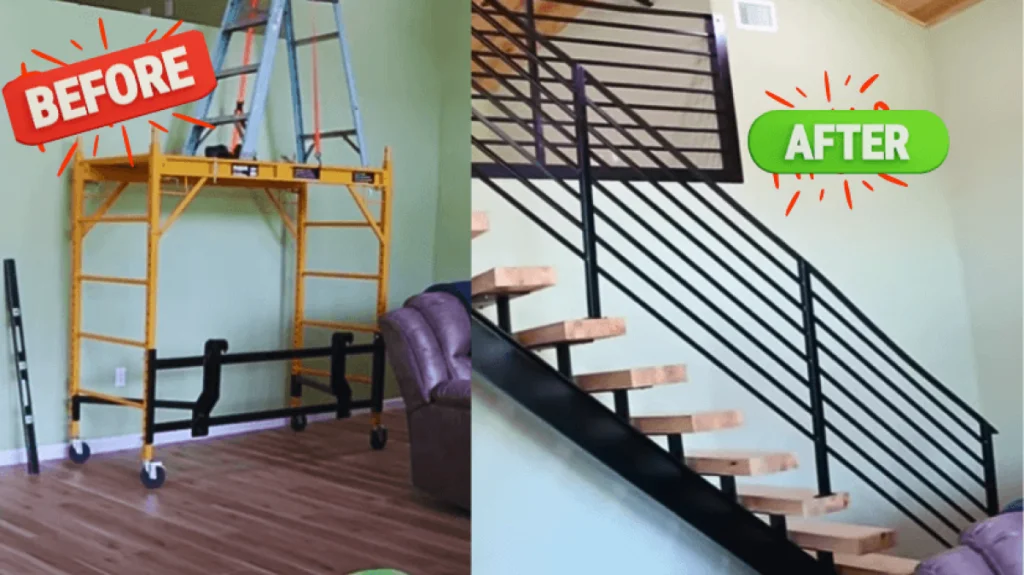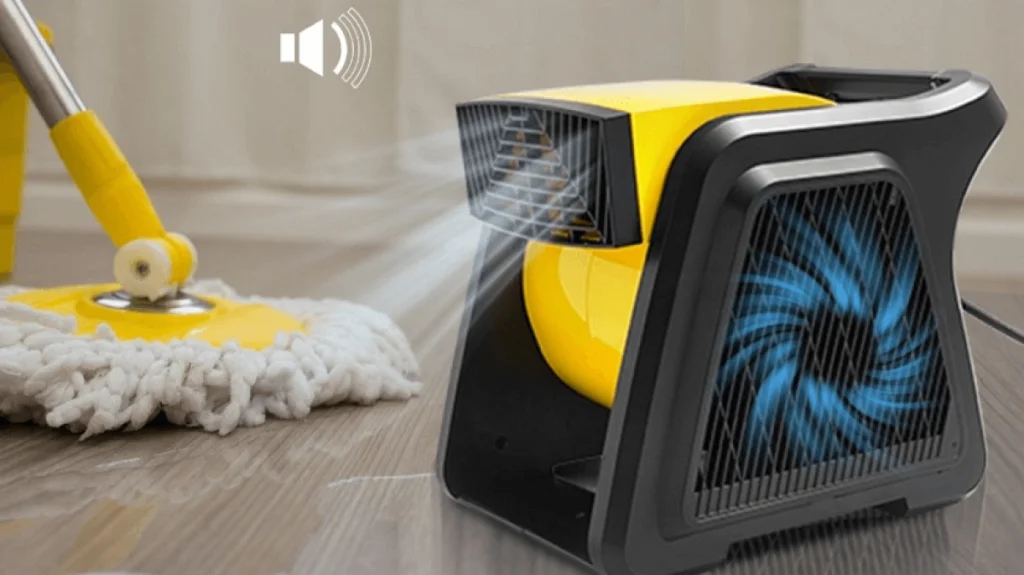Balconies or staircases are an essential part of modern structures, but there is always a concern for safety. While they can transform a place, there needs to be some safety arrangements in place. This is where pipe railings come into play.
These railings are used to give a stylish look to the balconies, porches, or staircases while also providing safety. In this article, we will walk you through different types of metals used to make pipe railings, the top market picks for the year 2024, and the pros and cons of these metals. Whether you have any questions on installation or there are other things related to pipe railings that you need to make a decision about—stick around; our article has all the answers!
So, let’s learn everything about pipe railings.
Table of contents
Why Choose Pipe Railing?
You might be contemplating a sleek touch to your living space by using a pipe railing. But the question may pop up in your mind: why do you want to go for it? These handrails have been a reliable choice for many architects and builders. The reason being the smooth look and safety they give.
Some may think these solidly built handrails wouldn’t bring the required trendy look to their house, but this is not the case. These pipe handrails can be made from different metals. Industrial steel, aluminum, and stainless steel are used to make pipe railings. While the industrial steel brings the much-needed sturdiness, the sophisticated aluminum adds the style.
The beauty of pipe railing lies in its adaptability—it’s like putty in your hands but made from metal. You can shape it to fit any outdoor or indoor vibe you’re going for because, let’s face it, one size does not fit all when we talk decor.

Different Types of Pipe Railing
When you’re eyeing that sleek pipe handrail to give your space a modern twist, the material it’s made from matters just as much as its looks.
Before we dive any further into the discussion, we will take a look at the different types of pipe railings available. We will examine what each metal is and how it can be used in houses to transform their aesthetics. So, without further ado, let’s check them out one by one.
Steel
Solid as a rock—that’s steel for you. It supports heavy loads without budging an inch. But remember, this heavyweight champ needs protection against corrosion. Thus, splashing on some paint or powder coating is always the wise thing to do.
Aluminum
The featherweight contender among metals, aluminum won’t give up when faced with corrosion—which makes maintenance very easy.
Stainless Steel
This is where form meets function head-on. Stainless steel stands tall against rust while flaunting its polished looks around moisture-heavy environments.
Pros and Cons of Each Type of Pipe Railing
Each type has its cheerleaders and critics—but hey, variety is the spice of life, right? Weighing their pros and cons helps ensure that what rolls into your home isn’t just good-looking but also practical. Whether braving harsh outdoor elements or complementing your cozy living room aesthetic—the right choice in pipe railing promises both security and flair.
Steel – The Strong Silent Type
We have discussed how steel can bear heavy loads. But there’s more than meets the eye with steel railings. They come in various styles – think industrial chic or minimalist modern – which can seriously up your design game while keeping things sturdy.
The downside? Steel might flex its muscles in terms of strength but could take more out of your wallet for installation and upkeep.
Aluminum – Lightweight Yet Mighty
Moving on to aluminum, this one’s super lightweight. That makes installation a breeze – like putting together furniture with those wordless instructions (but actually succeeding). Plus, if you live by the sea or love salty air breezes through your hair at home, aluminum won’t rust when exposed to coastal environments.
This metal does have its kryptonite, though; dents and scratches can show up uninvited if not handled carefully.
Stainless Steel – The Shining Star
Last but certainly not least is stainless steel – imagine silverware that never tarnishes. With its high-end look and resistance to rusting and staining, stainless steel brings an elegance that other materials only dream about. And cleaning? Just wipe away dirt without breaking into a sweat.
Surely there must be some cons here? Well, yes, cost is one since all these benefits don’t exactly come cheaply.
So, whether you lean towards functionality or want something that makes your house stand out, picking between these metals will help shape both the form and function of your chosen pipe railing system.

Top 3 Best Indoor and Outdoor Pipe Railings of 2024
You are in the market for a sleek, sturdy railing system, but with so many options out there, how do you pick? Fear not—we have got your back.
This year’s top contenders balance aesthetics with functionality beautifully—and we’re here for it.
Whether you want something low-profile or eye-catching statement pieces around your patio space, manufacturers have really stepped up their game this year.
Here’s a rundown of the top three pipe railings making waves this year. All three options offer distinct advantages depending on your specific needs—from aesthetics to ease of installation.
1. VEVOR Stainless Steel Handrail for Outdoor Steps
The first one on our list is this handrail pipe offered by VEVOR, and it lives up to the claim. This pipe railing is specially designed with the elderly, children, and disabled people in mind. They can safely climb stairs by getting support from this handrail. It is rust-free and just needs a wipe-down. Ideal for outdoor areas like gardens, balconies, and porches, this handrail is also easy to install.
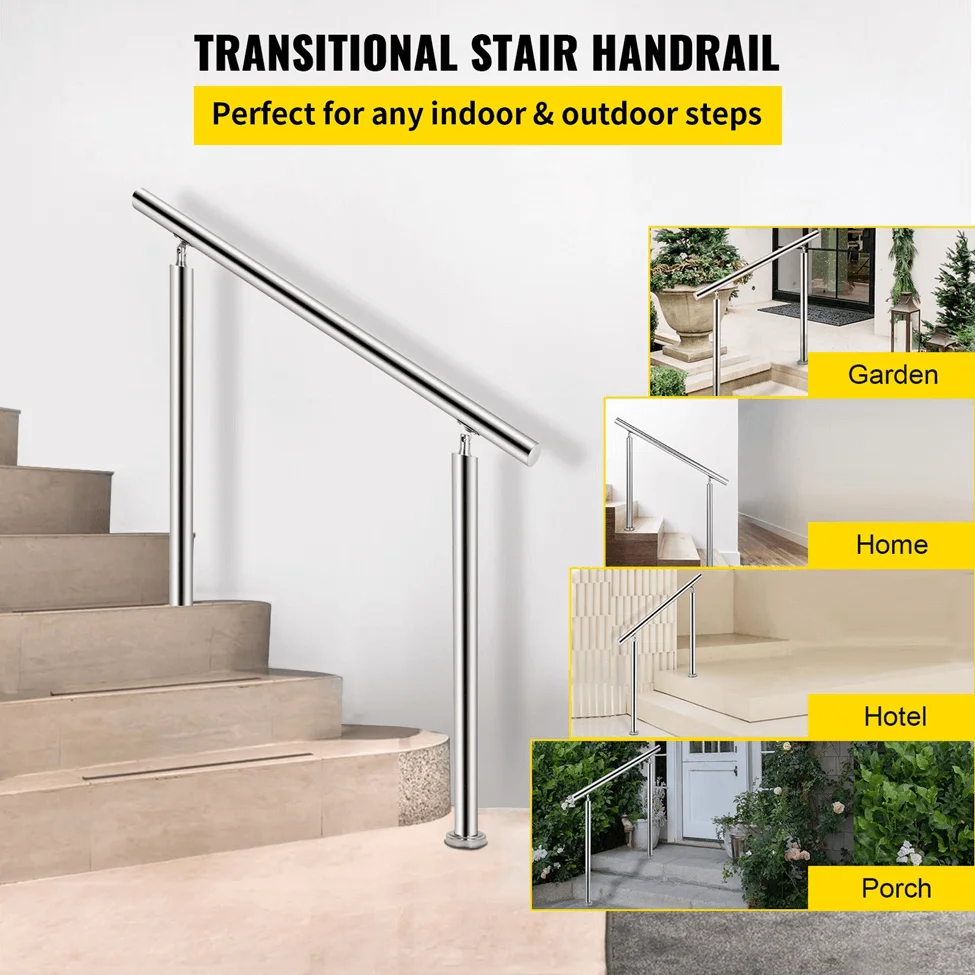
2. VEVOR Outdoor Aluminum Black Stair Railing
The next one on our list is another masterpiece by VEVOR. An outdoor railing made with lightweight yet mighty aluminum is all your house needs to look trendy. Without worrying about corrosion or scratches, this handrail doesn’t need much care. It comes with a flexible screw connection so you can change its angle from 0-30° according to your choice. Another feature is its easy assembly, and anyone who fancies DIY projects can easily tackle this task over a weekend.
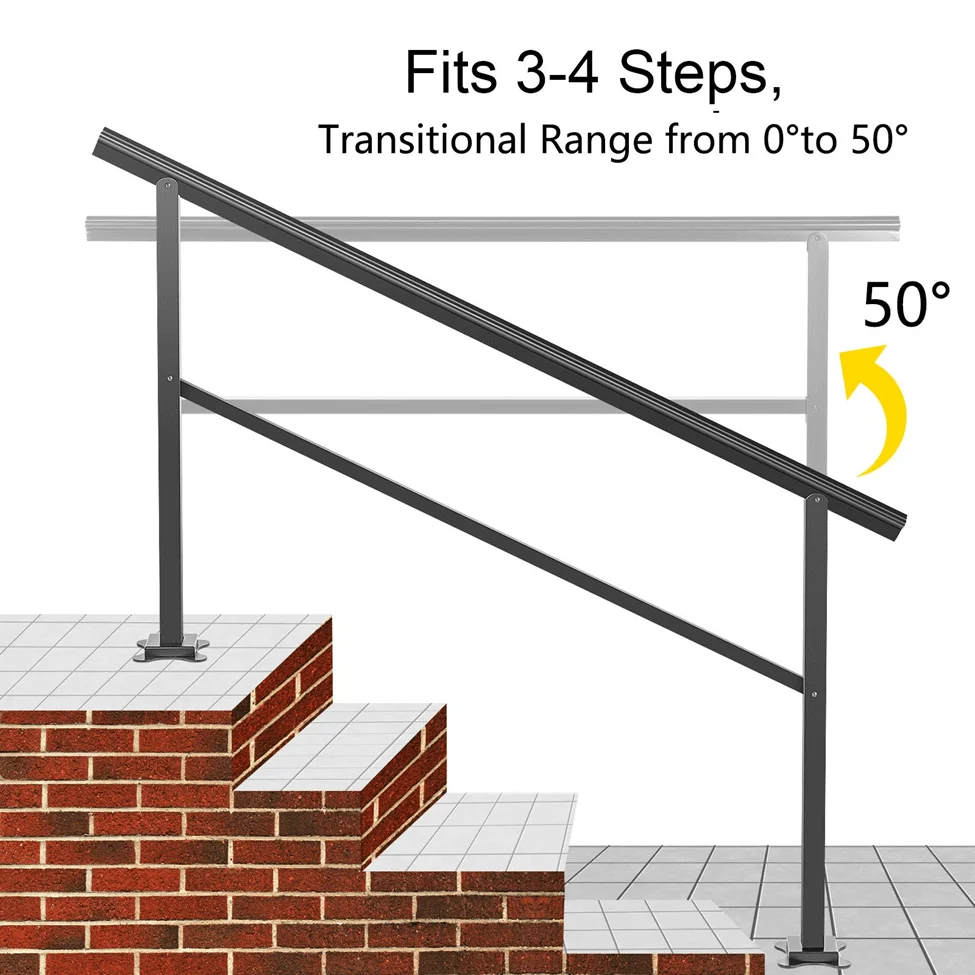
3. VEVOR Stainless Steel Transitional Handrail with Installation Kit
The last one we have on our list comes with an installation kit. Thus, you don’t have to worry about installing this pipe handrail. With a high load-bearing capacity, this railing can hold up to 200 kg. It can also be adjusted for 2 – 3 steps. With an economical price and such impressive features, this handrail has been making waves in the market.
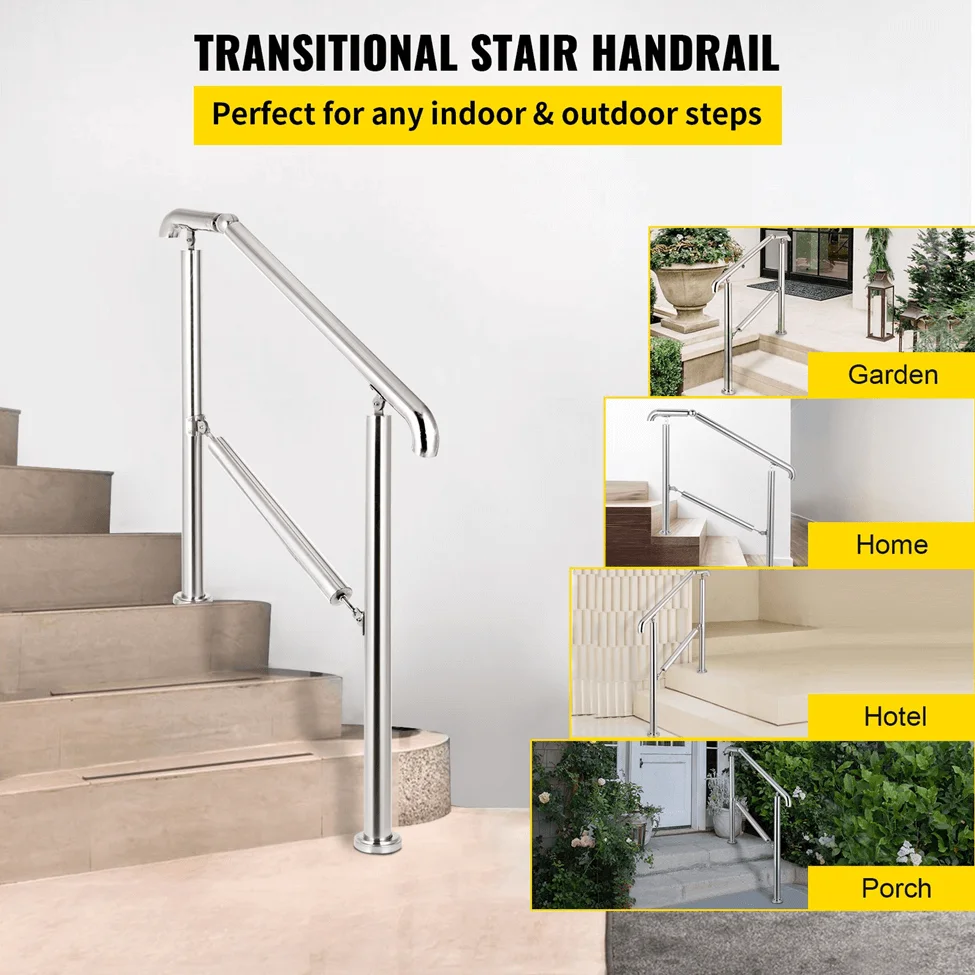
Pipe Railing Installation Process
Think of pipe railing installation as a puzzle where each piece fits perfectly to create a sturdy, stylish safety feature. It’s not just about connecting A to B; it’s an art that enhances both function and form in your space.
To help you out here, we have provided a step-by-step guide to installing pipe railing. So, let’s get started.
Gathering Your Tools and Materials
Before you start, make sure you have all the right tools on deck. You’ll need items like measuring tape, level, drill, saws for cutting metal or PVC pipes, depending on your material choice, and wrenches for tightening fittings. And let’s not forget the star of the show: your chosen pipes and matching fittings. A good tip is to lay out everything beforehand. This way, you can spot if something’s missing before it becomes a headache mid-installation.
Measuring Twice Before Cutting Once
The old carpenter’s adage never fails—especially with pipe railings where precision matters big time. After plotting out where your rails will go, use that trusty tape and measure twice before making any cuts. Because once those pipes are cut, there’s no going back unless you fancy an unplanned trip back to the store—and who wants that?
Fitting Everything Together Snugly
This step is satisfying yet crucial: fitting each section together snugly ensures stability, which is key for safety reasons (and avoiding wobbles). Connect elbows at corners tightly and secure flanges firmly against the surfaces they’re mounted onto. If some parts don’t seem cooperative—a little elbow grease often does wonders, but be careful not to strip threads or damage finishes by over-tightening.
Anchoring Securely into Place
Your railings should be secured properly to provide the required safety. To drill holes, you should first mark the areas. After marking the areas, tighten the flanges using screws suited for either wood or concrete bases. In order to follow safety regulations, we suggest double-checking these fittings.
Remember! Although this guide gives you the roadmap through pipe railing installation, always follow local building codes—they’re like traffic laws keeping everyone safe along their DIY journey.
FAQs About Pipe Railing
When it comes to choosing the right pipe railing for your project, you may have many questions running in your mind. From maintenance of a pipe railing to installation, we have gathered all important questions below. Read on to get the answers to all these questions.
Q: Why is a pipe rail used?
A pipe handrail is used as a safety barrier to prevent accidental falls. They are also used to give support to the elderly, small children, or someone who needs assistance while walking.
Q: Which kind of metal is used for railings?
Railings are made from metal pipes such as aluminum or steel because these metals are known for their sturdiness and durability.
Q: What should be the maximum space between two railings?
According to OSHA standards, there needs to be 4 inches of maximum space between two pipe railings.
Q: Can a PVC pipe be used for railing?
Yes, PVC can be used for railing in patios, gardens, and other low-stress areas.
Conclusion
So, we hope our article has given you a much-needed insight about pipe railing. We discussed different metals like aluminum and steel and also talked about the pros and cons of each. If you have been looking for the top picks of the year 2024, then surely, this article is your go-to guide for a trendy look indoors or a sturdy vibe outdoors. Thus, it is safe to say that pipe railing not only makes your living space aesthetically pleasing but also gives you peace of mind by avoiding accidental falls.


